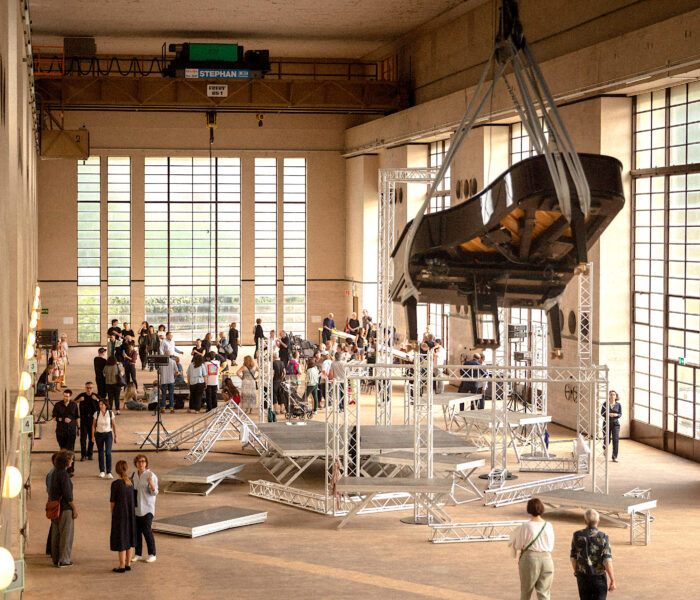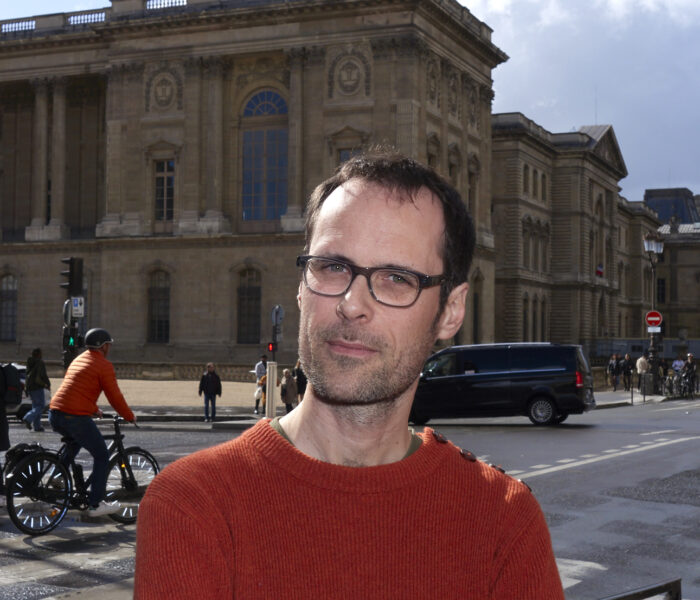Les sculptures, performances et installations immersives d’Haroon Mirza testent l’interaction et la friction entre les ondes sonores, les ondes lumineuses et le courant électrique, qu’il manipule comme un phénomène vivant, invisible et volatile. En 2009, en hommage à la Dreamachine de Brion Gysin, il conçoit la Dreamachine 2.0. Au dispositif stroboscopique bricolé, ils substituent des lumières LED pilotées par ordinateur et incorporent des sons à des fréquences qui correspondent à l’activité électrique du cerveau. Dans le cadre de la Biennale du son, il reprend ce travail dans une version performative qu’il a baptisé en référence à Terence McKenna (1946-2000) Self-transforming machine elves.
Haroon Mirza, lors de vos études, vous vous passionnez pour l’essai de McLuhan sur l’espace acoustique. Pourriez-vous nous dire en quoi cette lecture a nourri votre travail?
D’une part, l’essai de Mc Luhan décrivait essentiellement la manière dont les informations diffusées sur des plateformes médiatiques telles que la télévision ou un journal se comportent acoustiquement, car l’espace acoustique, contrairement à l’espace visuel linéaire, est sphérique, le son se propageant de manière omnidirectionnelle à la même vitesse. Cette idée m’a fourni une base pratique pour comprendre que mon travail est en quelque sorte une synthèse entre le visuel et l’acoustique et qu’il existe une géométrie spatiale dans la manière dont le contenu de mon travail (ou de tout autre travail) est perçu.
L’autre influence importante que les essais de Mc Luhan ont exercée sur mon travail est l’idée qu’avant le langage, la vue et l’ouïe étaient un seul et même mode de perception. Il n’y avait donc pas de distinction entre l’œil et l’oreille, l’espace visuel et l’espace acoustique – tout cela faisait partie de “l’expérience” de la réalité. C’est ce type d’espace que je souhaite voir explorer dans mon travail. Celui de l’expérience pure, dépourvu de toute distinction sensorielle.
J’ai lu dans un entretien que vous vous définissez plus comme un compositeur qu’un artiste. Pourriez-vous nous éclairer sur ce point?
J’ai tendance à ne plus le faire, car cela m’a parfois valu des ennuis avec les vieux hommes blancs, riches et étouffants qui dominent la musique classique contemporaine. J’aime le terme de compositeur, car il décrit la manière dont nous organisons et enregistrons le matériel, qu’il s’agisse de matériel acoustique dans le temps, de matériel visuel dans l’espace ou de matériel conceptuel avec le langage. La plupart des artistes font du compostage et le terme “artiste” n’a pas de signification fixe – c’est un terme général pour définir quelque chose que nous ne pouvons pas entièrement définir. De plus, lorsque je dis que je suis un artiste, j’ai l’impression de dire aux gens que je suis au chômage!

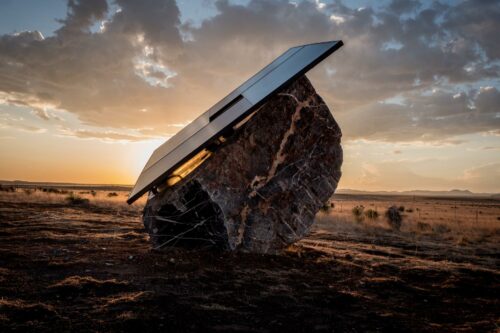
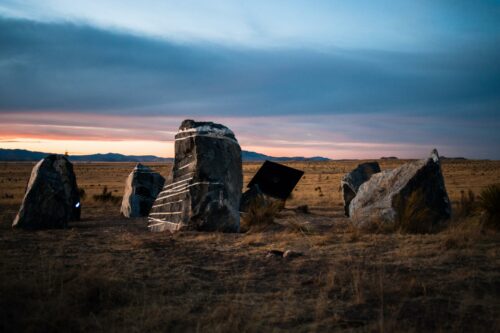
Comme en témoignent certaines œuvres récentes Stone Circle ou encore For A Dyson Sphere, vous prenez en compte les questions environnementales : est-ce pour vous une contrainte limitative ou inspirante?
Il ne s’agit pas d’une contrainte ou d’une limitation, mais d’une prise de conscience et d’une responsabilité que nous avons tous en tant qu’organismes sur cette planète. Lorsque nous avons réalisé le projet de Stone Circle, c’était le moyen le plus pratique et le plus efficace de produire de l’électricité dans le désert. Avant ce projet, je n’avais pas vu un seul panneau solaire sur les trois heures de route entre El Paso et Marfa. Après le lancement du projet, l’entreprise solaire qui nous a sponsorisés, Freedom Solar, a ouvert un magasin à Marfa en réaction à la demande! Même si je ne suis plus sûr que l’énergie solaire soit la forme la plus efficace de production d’énergie, elle est beaucoup plus durable que le pétrole qui fait la richesse du Texas.
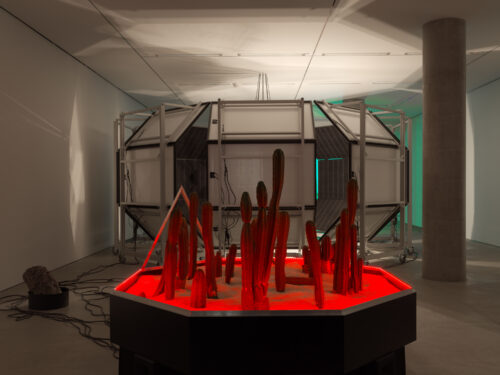
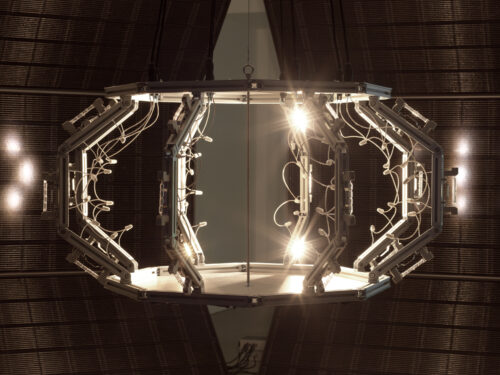
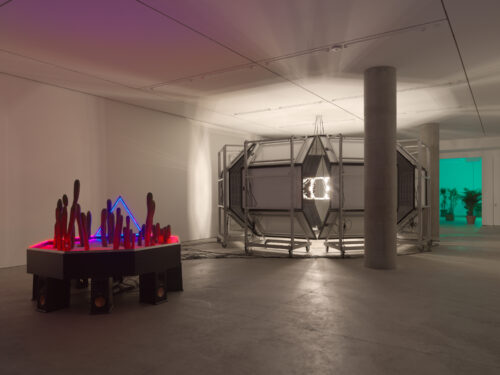
Évoquons la performance que vous avez présentée le 16 septembre dans le cadre de l’ouverture de la Biennale son. La performance a été réalisée dans une usine hydro-électrique désaffectée : quel rôle jouent le lieu, rôle physique ou symbolique?
Je réalise depuis longtemps des œuvres et des performances avec de l’électricité et de l’eau, en utilisant parfois la nature chaotique de ces deux matériaux organiques et, le plus souvent, leur sonorité. Le bruit blanc de l’eau et l’impulsion des signaux électriques constituent un spectre illimité de matériaux de composition. La combinaison de l’eau et de l’électricité est toujours un acte critique et politique. L’un génère l’autre, mais la combinaison des deux peut être si dangereuse qu’elle est souvent utilisée pour faciliter le suicide.
Dans le cas présent, il s’agit d’un type de médiation qui induit des transes et des hallucinations dans le but de synthétiser une expérience de mort imminente (EMI) par le biais du son et de la lumière. Il s’agit des “Self Transforming Machine Elves”, c’est ainsi que Terence McKenna appelle les entités que l’on rencontre sous l’influence de la nn-diméthyltryptamine (DMT), la substance psychotrope utilisée dans l’Ayahuasca et naturellement présent dans toutes les plantes et tous les mammifères, y compris en nous, les êtres humains.
Les signaux électriques sont dérivés d’un travail antérieur réalisé en collaboration avec Siobhan Coen et en consultation avec des neuroscientifiques de l’Imperial College dont les études révolutionnaires ont établi le lien entre la cette expérience de la mort imminente et la diméthyltryptamine.
Pour conclure ces entretiens, je vous pose la même question : Que représente pour vous cette première Biennale son en Suisse?
C’est merveilleux de participer à cette biennale inaugurale. Il existe une myriade de sous-groupes au sein de l’idée générale de l’art : l’art sonore, l’art médiatique, l’art numérique.
Propos recueillis par Anne-Laure Chamboissier
Photos © David Bebber
Photos © Rowdy Dugan
Photos © Courtesy Lisson Gallery



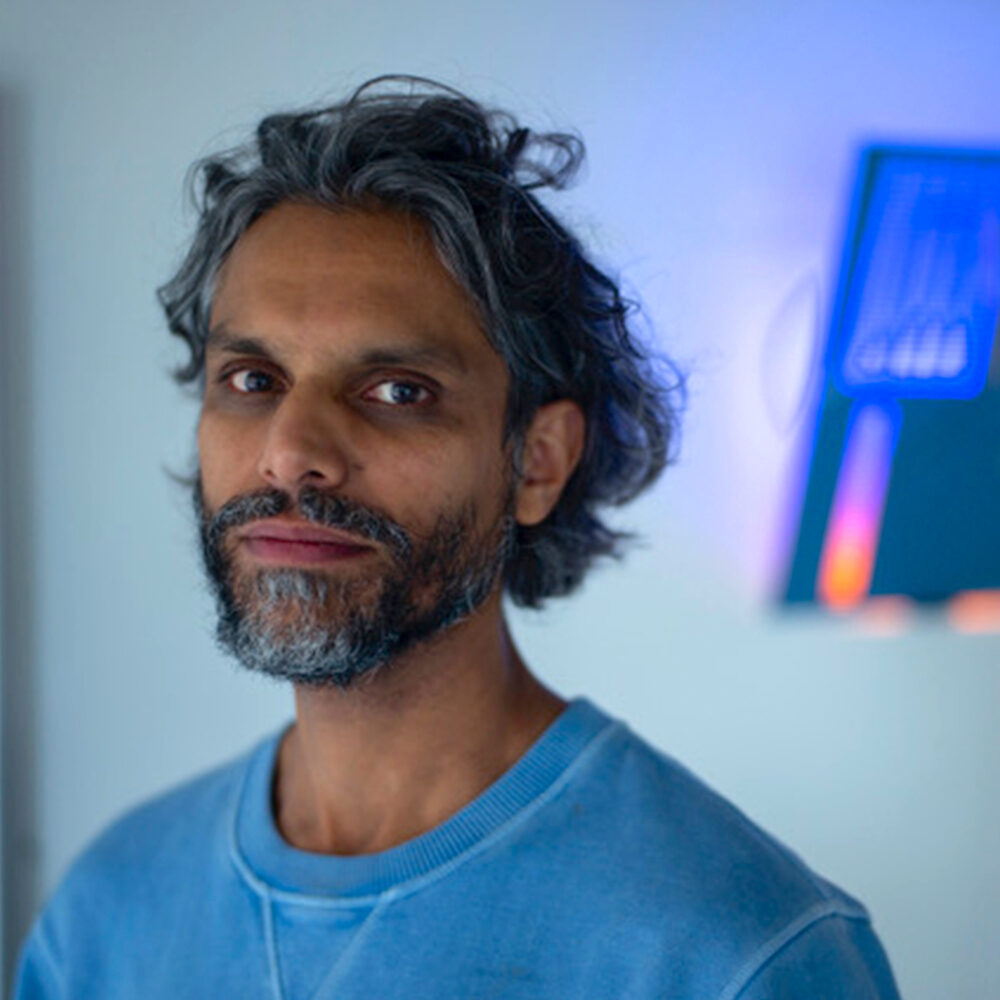)

